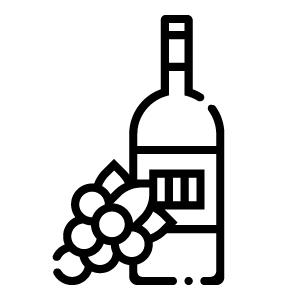Chateau Pichon Longueville Comtesse de Lalande 2009 Pauillac
Code: VI90479



Related products
Product detailed description
Women have always been responsible for making the local deuxiéme cru classé, so it's no surprise that they have done so in their own unique way. The estate was named in 1694 after the then owner of the estate, Pierre de Mazure de Rauzana Theérés, who married a certain Mr Jasque de Pichon Longueville. The founder of the estate was Baron Joseph de Pichon Longueville, whose exacting standards ensured the quality and permanence of the domain. Baron Joseph died in 1850 at the age of 100. Before that, however, he had divided the estate between his children: two fifths went to his two sons, three fifths to his three daughters. His youngest daughter Virginia was the most energetic. By marrying Count Henri de Lalande, she acquired the title of countess and eventually her sisters' shares, and created her own estate independent of the part of Pichon Longueville owned by her brother Raoul. Thanks to the Countess's diligence and steady hand, the new estate gained an enviable position in the 1855 wine classification. Between 1850 and 1882, she managed to raise the winery to the pinnacle of excellence. Chateau Pichon - Longueville Comtesse de Lalande was then passed on from generation to generation until the economically difficult 1920s, when the Miailhe brothers bought the estate. In 1978, Edouard Miailheo's daughter May Eliane de Lancquesaing took over the management of the estate.
A hard foundation and endless length. The Winter Queen - beautiful, seductive but cruel. When time takes this veil off her, Comtesse will hardly be surpassed by anything.
Additional parameters
| Category: | Chateau Pichon Longueville Comtesse de Lalande |
|---|---|
| EAN: | 3519340090215 |
| Category: | dry |
| Wine color: | red |
| Country: | France |
| Region: | Bordeaux |
| Subregion: | Médoc |
| Winery: | Chateau Pichon Longueville Comtesse de Lalande |
| Grape variety: | 63 % Cabernet Sauvignon, 29 % Merlot, 5 % Petit Verdot, 3 % Cabernet Franc |
| Classification: | 2. Cru |
| Vintage: | 2009 |
| Alcohol (in %): | 13 |
| Volume (in l): | 0,75 |
Château Pichon Longueville Comtesse de Lalande
Château Pichon Longueville Comtesse de Lalande is a highly esteemed wine estate in the Pauillac appellation in the Haut-Médoc area of northern Bordeaux. Commonly abbreviated to 'Pichon-Lalande' or 'Pichon Comtesse' (partly to distinguish it from its neighbor, Château Pichon-Longueville Baron), it regularly produces highly praised, Cabernet Sauvignon-dominated Grand vin.
Pichon-Lalande is also adjacent to the First Growth powerhouse, Château Latour, at the southern end of the Pauillac appellation. All three estates share a similar terroir and climate, which partly explains the quality of wine at Comtesse de Lalande, sometimes referred to as 'almost First Growth.'
The production of this deuxième cru classé has always been overseen by women, so it is not surprising that they have done so in their own unique way. The estate got its name in 1694 from its then-owner, Pierre de Mazure de Rauzan Theérésa, who married a certain Mr. Jasque de Pichon Longueville. The founder of the estate was Baron Joseph de Pichon Longueville, whose exacting standards ensured the quality and consistency of the domain. Baron Joseph died in 1850 at the age of one hundred. Before that, however, he managed to divide the estate among his children: two-fifths went to his two sons, and three-fifths to his three daughters.
His youngest daughter, Virginie, was the most energetic. By marrying Count Henri de Lalande, she gained the title of countess and eventually acquired her sisters' shares, creating her own estate independent of the part of Pichon Longueville owned by her brother Raoul. Thanks to the countess's diligence and firm hand, the new estate gained a prestigious position in the wine classification of 1855. From 1850 to 1882, she managed to elevate the winery to the pinnacle of excellence. Château Pichon-Longueville Comtesse de Lalande then passed from generation to generation until the economically difficult 1920s when the estate was bought by the Miailhe brothers. In 1978, Edouard Miailhe's daughter, May Eliane de Lancquesaing, took over the management of the estate.








